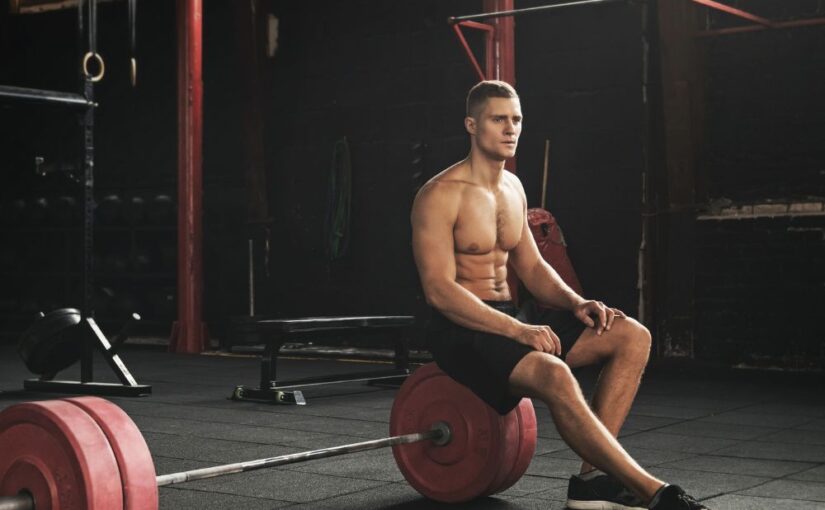Hypertrophy—also known as muscle growth—is a key goal for many strength training enthusiasts. While most focus on exercise selection, sets, and reps, one often overlooked factor is the amount of rest taken between sets. Research shows that adjusting rest periods can significantly impact your gains. In this article, we’ll break down the optimal rest periods for muscle growth and explain the science behind timing your sets for maximum results.
Understanding Hypertrophy
Hypertrophy occurs when muscle fibers experience damage from resistance training, leading to repair and growth. To optimize this process, several variables must be managed, including exercise intensity, volume, and rest intervals. The right rest period allows for sufficient recovery while maintaining the hormonal and metabolic responses needed for muscle growth.
Recommended Rest Intervals
- Short Rest (30-60 Seconds)
Shorter rest intervals of 30 to 60 seconds are typically recommended for higher-rep training (around 12-15 reps or more). This approach enhances metabolic stress, a key factor in muscle hypertrophy. The accumulation of metabolites like lactate can stimulate muscle growth, but excessively short rest can hinder the ability to lift heavy enough to create significant mechanical tension. - Moderate Rest (60-90 Seconds)
A rest period of 60 to 90 seconds is commonly suggested for moderate-rep training (around 8-12 reps). This timeframe allows partial recovery of energy systems, enabling lifters to maintain performance while still promoting metabolic stress. Studies suggest that this range is effective for hypertrophy, providing a balance between mechanical tension and metabolic stress. - Long Rest (2-3 Minutes)
Longer rest intervals of 2 to 3 minutes are generally recommended for lower-rep training (around 1-6 reps). This approach allows for complete recovery of the phosphagen energy system, enabling you to lift heavier weights in subsequent sets. Although this may seem counterintuitive for hypertrophy, the increased load can lead to greater overall muscle tension, which is essential for growth.
Comparison of Rest Periods and Their Effects on Hypertrophy
| Rest Period | Reps Range | Growth Focus | Key Benefits | Ideal for |
|---|
| 30-60 Seconds | 12-15+ reps | Metabolic Stress | Increases growth hormone, enhances muscle endurance, promotes metabolic stress | Isolation exercises (e.g., bicep curls, tricep extensions) |
| 60-90 Seconds | 8-12 reps | Growth/Strength | Balances mechanical tension and metabolic stress | Compound and isolation exercises |
| 2-3 Minutes | 1-6 reps | Strength | Allows for recovery, lifts heavier weights, enhances muscle tension | Powerlifting and strength training (e.g., squats, deadlifts) |
Individual Considerations
The optimal rest periods for muscle growth can vary based on several factors:
- Training Experience: Beginners may benefit from shorter rest periods as they develop their endurance, while advanced lifters might require longer rests to recover adequately for heavy lifts.
- Workout Goals: If the primary goal is strength, longer rests may be more appropriate. Conversely, if focusing on muscular endurance, shorter rests could be beneficial.
- Exercise Selection: Compound movements, such as squats and deadlifts, typically require longer rest than isolation exercises like bicep curls, due to their greater demand on the central nervous system and larger muscle groups.
The Role of Hormones
Rest intervals also influence hormonal responses critical for hypertrophy. Shorter rest periods can elevate levels of growth hormone, which is linked to muscle growth. However, longer rests can lead to higher testosterone levels, especially when lifting heavier weights. Balancing these factors is crucial for maximizing overall muscle growth.
Practical Tips for Rest Between Sets
- Listen to Your Body: Monitor your performance. If you feel fatigued and can’t maintain proper form, consider extending your rest period.
- Stay Active: Light stretching or mobility work during rest can help keep blood flowing and reduce stiffness.
- Hydrate: Use rest periods to hydrate, as proper hydration supports overall performance and recovery.
- Track Your Progress: Keep notes on your rest intervals and performance to determine what works best for you over time.
Conclusion
The optimal rest period between sets for maximum hypertrophy generally falls between 60 to 90 seconds for moderate-rep ranges, while longer rest intervals of 2 to 3 minutes are beneficial for strength-focused training. However, individual factors such as training experience, workout goals, and exercise selection play significant roles in determining the best rest time for you. By understanding and adjusting your rest periods for muscle growth, you can enhance training effectiveness and build muscle more efficiently.
Frequently Asked Questions (FAQ)
Rest periods are the amount of time you take to recover between sets during a workout. These periods can affect muscle hypertrophy (growth), depending on their length.
For optimal hypertrophy, rest periods should generally range from 60 to 90 seconds for moderate-rep training (8-12 reps). For heavier lifts (1-6 reps), longer rests of 2-3 minutes are ideal.
Yes, shorter rest periods (30-60 seconds) can boost metabolic stress and increase growth hormone levels, both of which are beneficial for hypertrophy. However, they may limit the amount of weight you can lift.
Yes, compound movements like squats or deadlifts typically require longer rest periods (2-3 minutes) due to their intensity. Isolation exercises, such as bicep curls, typically respond well to shorter rest periods of 60-90 seconds.
Shorter rest intervals can elevate growth hormone levels, while longer rest periods may increase testosterone levels, especially when lifting heavier weights. Both hormones support muscle growth.
Recommended for Tracking Rest Periods
For those looking to optimize their workouts and stick to effective rest intervals for muscle growth, the following tools can help improve accuracy and consistency during training sessions:
Gym Stopwatches
Designed for precision timing, gym stopwatches help you monitor your rest periods between sets without distractions.
Interval Timers
These timers are ideal for structured workouts, allowing you to set specific work and rest intervals tailored to your goals.
Home Gym Clocks
Wall-mounted or digital clocks with interval features are perfect for keeping rest periods consistent during home workouts.
Affiliate Disclaimer:
The above links are affiliate links, which means we may earn a small commission if you purchase through them—at no additional cost to you.

